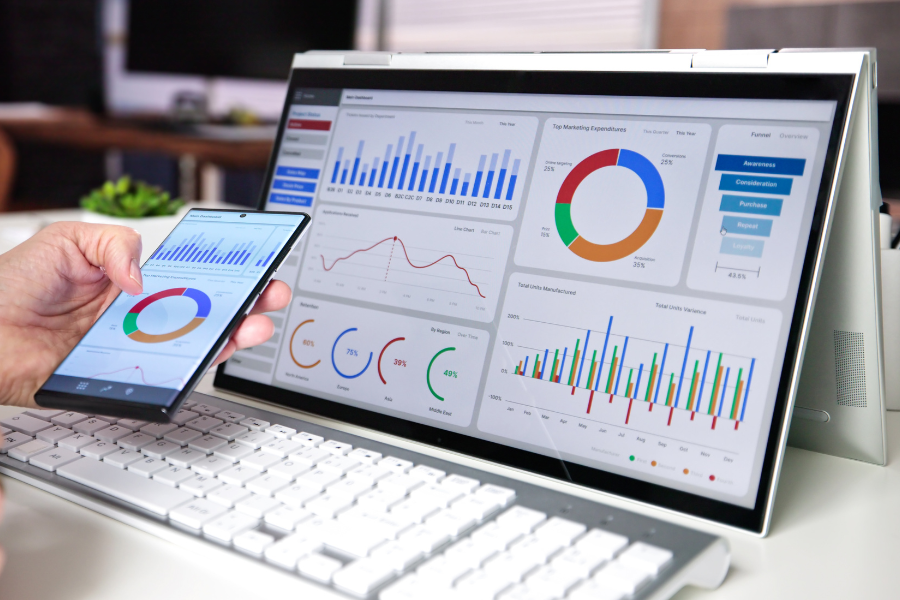
In the era of technology pictures are ubiquitous. They are found in platforms such, as media and medical imaging shaping our ways of communication and perception of the world. Apart from their attractiveness, images contain information that can be extracted. This is where image analysis becomes significant. In this article we will delve into the capabilities of image analysis and its ability to convert pixels into information.
Understanding Image Analytics
Analyzing images, with algorithms and techniques to extract information is the essence of image analytics. This technology plays a role in sectors like healthcare and retail transforming how we understand visual data by recognizing patterns, objects and important elements, within images.
The Technology Behind Image Analytics
Understanding Image Data
Images transcend pixels; they represent a tapestry of data points awaiting interpretation. Image analysis delves into extracting insights from these datasets employing sophisticated algorithms to process, scrutinize and comprehend images. The workflow typically encompasses stages like image preprocessing feature extraction, pattern recognition and interpretation.
For instance within the realm image analysis can assist in pinpointing anomalies in X rays or MRIs by discerning patterns that may elude the eye. In settings it could scrutinize customer interactions within stores by monitoring movement patterns or emotional reactions to displays. These gleaned insights from images can significantly elevate decision making processes by offering a data approach to resolving challenges.
Key Techniques in Image Analytics
- Machine Learning and AI: Machine learning, learning methodologies holds a critical role in image analysis. Convolutional Neural Networks (CNNs) have emerged as a standard for tasks, like image categorization, object detection and segmentation – empowering machines to interpret images with a level of precision.
- Computer Vision: This domain encompasses methodologies that enable computers to ‘see’ and comprehend data. Computer vision plays a role in image analysis applications ranging from facial recognition to image enhancement.
- Edge Detection and Segmentation: One key aspect involves edge detection and segmentation techniques. Edge detection helps identify the contours and structures in an image while segmentation breaks down the image into segments, for analysis.
Applications of Image Analytics
- Agriculture: Improving Crop Health and Yield Management
Image analytics is transforming the way farmers oversee and take care of their crops in agriculture. By using drones and satellite imagery farmers can capture pictures of their fields. These images are then examined to identify signs of diseases, pests and nutrient deficiencies. Detecting these problems allows farmers to act promptly leading to crop yields and less resource waste. Image analytics also supports precision agriculture enabling use of water, fertilizers and pesticides to encourage sustainable farming practices.
- Forestry: Monitoring Forest Health and Preventing Deforestation
The field of forestry management benefits greatly from image analytics in monitoring forest health and preventing deforestation. High resolution satellite images and drone footage help analyze forest areas by detecting changes in vegetation cover, tracking wildlife habitats and assessing the impact of disasters. These insights are vital for conservation efforts to preserve biodiversity and ensure forest management. Image analytics also assists in spotting logging activities for enforcement of environmental regulations.
- Mining: Boosting Operational Efficiency and Safety
Image analytics plays a role in enhancing efficiency and safety, within the mining industry.A combination of ground based images is utilized for overseeing mining locations, evaluating terrain conditions and identifying risks, like landslides or equipment issues. Through the analysis of these visuals mining companies can streamline extraction processes, minimize downtime and prioritize the safety of their employees. Moreover image analysis plays a role in conducting environmental impact assessments to reduce the impact of mining operations.
- Homeland Security and Defense: Strengthening Surveillance and Threat Detection
Image analysis serves as an element in bolstering surveillance and threat detection capabilities within homeland security and defense sectors. By scrutinizing images captured by security cameras, drones and satellites authorities can vigilantly monitor areas for behavior, detect unauthorized entries and swiftly identify potential threats. Techniques such as recognition behavioral analysis and object detection are pivotal in this field as they provide insights that aid in preventing security breaches while safeguarding essential infrastructure.
- Utilities: Optimizing Infrastructure Management
Image analytics plays a role in enhancing infrastructure management across utilities sectors like water supply networks, electricity grids and telecommunications systems. In water utilities management specifically. Image analytics assists in monitoring water resources by identifying leaks and evaluating pipeline conditions. In the field of electricity it helps to check power lines, find issues and guarantee the dependability of the grid. Telecom companies can utilize image analysis to examine cell towers, spot obstacles and improve network coverage. These uses not enhance service provision but lower up keep expenses and strengthen utility networks resilience.
The Impact of Image Analytics on Business
- Driving Innovation and Efficiency
Businesses in industries are harnessing the capabilities of analysis to foster progress and enhance productivity. By transforming data into actionable insights organizations can streamline operations, cut expenses. Introduce fresh value propositions. For example in the realm of manufacturing visual analysis is employed for quality assurance to pinpoint flaws in products with accuracy ensuring that only top notch items make it to market.
In agriculture visual analysis aids in monitoring crop health and forecasting yields through the examination of satellite or drone imagery. This empowers farmers to make informed decisions regarding resource allocation leading to harvests and sustainable practices.
- Enriching Customer Interactions
Grasping customer behavior is vital for businesses striving to elevate the customer experience. Visual analysis offers a means to scrutinize how customers engage with products and services providing insights that can pave the way for captivating experiences. For instance within the entertainment sector visual analysis can assess audience responses to movie scenes aiding filmmakers in understanding what resonates with their viewers.
Likewise on platforms visual analysis can be utilized to customize recommendations based on users visual preferences enhancing user satisfaction and relevance.
- Supporting Sustainability and Compliance
Promoting Environmental Responsibility and AdherenceIn the world of sustainability image analysis plays a role, in overseeing conditions and ensuring adherence to regulations. For instance, in the realm of monitoring satellite images can be examined to monitor deforestation, observe wildlife habitats and evaluate the impact of calamities. This information is essential for organizations striving for sustainability objectives and for governments enforcing rules.
Additionally in industries where meeting regulations is crucial. Such as pharmaceuticals or food production. Image analysis can automate inspections to guarantee that products adhere to requirements and minimize the chances of non compliance.
The Future of Image Analytics
- Advancements on the Horizon
The advancements in image analysis hold a wealth of opportunities as technology progresses. The fusion of image analysis with cutting edge technologies like the Internet of Things (IoT) and augmented reality (AR) is poised to unveil a myriad of applications and insights. For example in areas image analysis could play a pivotal role in monitoring traffic patterns and enhancing transportation systems efficiency ultimately leading to reduced congestion and lower environmental impact.
Furthermore with the increasing sophistication of AI models the precision and speed of image interpretation will see enhancement paving the way for possibilities in sectors such as autonomous vehicles where instantaneous image processing is crucial for safe maneuvering.
- Challenges and Ethical Considerations
While holding significant promise image analysis also brings forth challenges and ethical dilemmas that require attention. Privacy issues are paramount particularly concerning applications involving recognition and surveillance. Ensuring that image analysis systems are transparent, secure and used ethically is vital for upholding confidence.
Additionally akin to any AI driven innovation ongoing supervision is necessary to prevent biases in image analysis algorithms. These biases could potentially result in inaccurate outcomes within sensitive domains, like healthcare or law enforcement.
Conclusion
Envision Beyond leads the way, in the image analytics revolution providing solutions to help businesses make the most of their data. With expertise spanning industries we offer customized analytics services that turn images into valuable insights. Whether your goal is to boost efficiency, enhance customer experiences or ensure compliance with regulations, our solutions are tailored to meet your requirements.
At Envision Beyond we believe in the power of data to foster innovation and deliver value. Our unwavering commitment to excellence guarantees that clients not receive top notch image analytics but a dedicated partner invested in their success. As the world progresses so do we continuously push boundaries in image analytics possibilities.
Join us in exploring what lies ahead and experience how Envision Beyond can enhance your business through the capabilities of image analytics.
